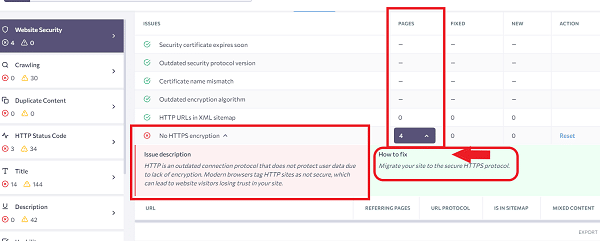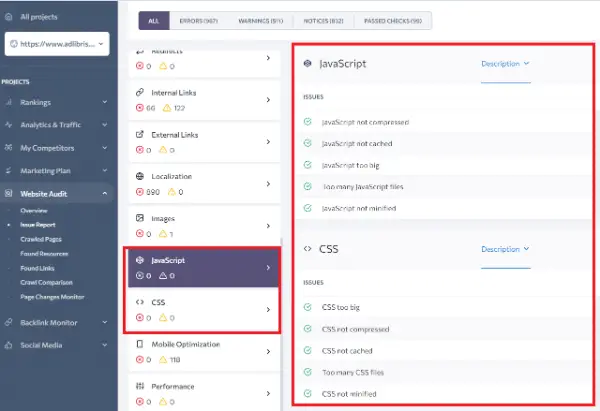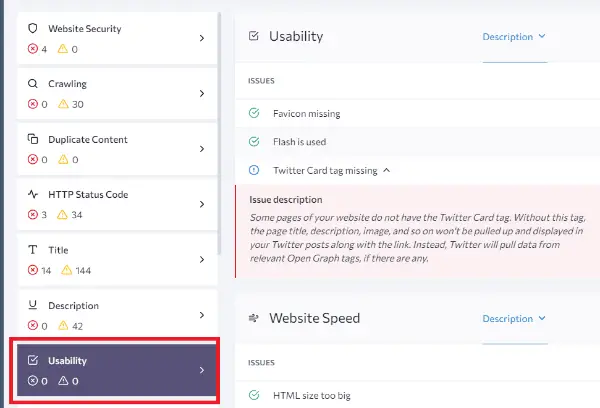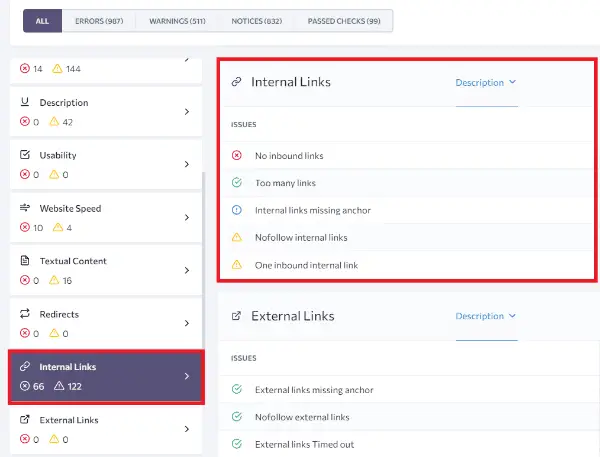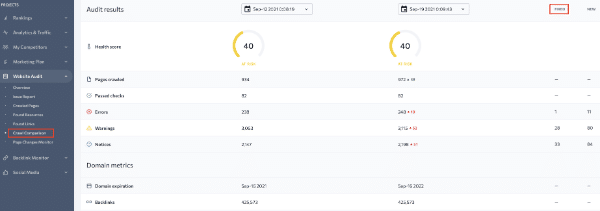Line25 is reader supported. At no cost to you a commission from sponsors may be earned when a purchase is made via links on the site. Learn more
Considering numerous search engine factors is a new normal of today’s SEO. It is not enough to cram your website with many relevant and even irrelevant keywords to hit the top position in the search results. User experience has become an essential factor in present-day SEO practices.
One of the great examples of the connection between UX and search engine optimization was presented by the Search Engine Journal specialists. According to SEJ research, Google does not rank directories in SERPs. A poor user experience occurs when the searchers are sent from a 10-link page to one with 20 links. It means that your website SEO performance and UX level you provide for Internet users are closely related.
User experience and SEO started to walk hand in hand three years ago, right after the mobile-first index was introduced in 2019. It was the very beginning of a new era where UX and search engine optimization became the integral unit for website transformations for higher SERPs.
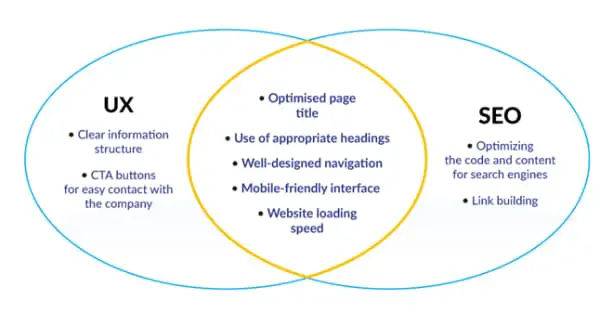
Source: RapidLab
To assess the credibility of the popular formula UX + SEO = SUCCESS, it is necessary to pay focused attention to the user experience parameters like navigation, mobile-friendliness, page loading speed, text formatting, etc. For this purpose, a comprehensive website audit is required. There are many online tools to audit a website, but not so many allow monitoring UX. For example, SE Ranking is considered a top-ranking software with a wide range of on-board options for website auditing and figuring out UX issues. It checks
- Technical parameters (security, page load time, crawling errors, indexation, HTTP status codes, redirects);
- Page breakdown (meta tags, links, duplicate content);
- Page resources (images, CSS, JavaScript);
- Website usability (Core Web Vitals, mobile optimization, load speed).
Today, we will take a closer look at the SE Ranking functionality for UX improvements because its SEO audit includes user experience analytical data that can be easily extracted.
What User Experience Data to Extract from SE Ranking Website Audit
First, it is necessary to sign up and specify the website to be analyzed. Besides the basic tools for SEO audit, there are user experience parameters to consider and monitor for analytics. Extraction of the UX data will be helpful for the improvement of the website’s visibility and SERP performance.
All the required user experience information becomes available in the section of the Issue Report when the website audit comes to an end. It takes about 5 minutes to finish analyzing any given site. The issue report in SE Ranking includes the showings of the UX website audit as well. All these parameters should be taken into consideration if you are interested in user experience improvements.

#1 Website Security
For your website, security plays one of the most significant roles. Safe and reliable sites (for example, encryption) improve UX because they build trust and loyalty to the company and brand. Website encryption, authentication, and data privacy are mainstays of website security which you should monitor and improve constantly. Let’s take a closer look at each of them. Summarily, encryption, authentication, and data privacy can be characterized the following way:
- Encryption – it is the technique when sensitive information is converted into a code. The encryption algorithm should be frequently updated to bring improved website security and better UX. Moreover, the absence of HTTP encryption or outdated encryption algorithm can become the main reason for losing trust in your website.
- Authentication – this is the way to verify the owner of the account and exclude the possibility of virtual intruders. If you would like to prevent unauthorized access to your website data, use two-factor authentication to ensure that the site’s visitors specify all the log-in information.
- Data privacy – a range of security-driven measures to prevent and withstand any data attacks. A secure website guarantees that all the personal information of users is well-protected. This is the capability to ensure that all the digital data is kept with integrity.
To check the website security parameters, open the SE Ranking Issue Report and take a look at the list of analyzed characteristics. Weak spots and errors will be presented with the available solution to the issue. In addition, the website owner can get the following user experience data related to the site’s security here:
- Number of pages with mixed content (unprotected HTTP code for additional website elements takes place);
- Pages with no HTTPS encryption (it is recommended to migrate your website to the secure HTTPS protocol to fix this issue);
- Number of pages with an outdated encryption algorithm;
- Availability of HTTP URLs in the XML sitemap;
- The insecure HTTP protocol is used for redirects from HTTPS to HTTP.
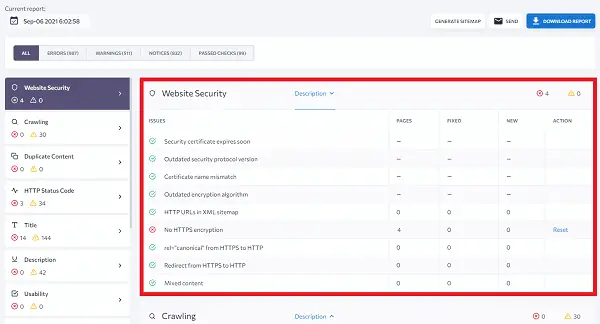
If there are any issues to fix, the software will inform you of the number of errors in the table (the Page column). After clicking on the issue, you will see the possible solution. It is recommended to recheck the website after any updates.
#2 Responsive Design
Responsive design also plays an essential role in the user experience of your website. A specific design approach focusing on user behavior and the required digital environment orientation is based on RWD (responsive web design). It considers the screen/display size, the platform, and other parameters for better interactions. A good and flexible (read “responsive”) design is one of the ways to enhance the user experience.
Optimization of imagery, layouts, and your site’s code is essential for responsive web design. First, you can be sure that all your graphical content will be displayed properly on various screen resolutions. Secondly, the responsive design-driven audit will help you check all the imagery, layouts, and coding elements regarding the most suitable format, conformity with other content, etc.
Note that optimized code without issues allows you to identify and remove useless elements and render-blocking ones. As for graphical content, the UX audit will be helpful to detect too large images that harm your user experience and identify missed alternative (alt) text to make images SEO- and user-friendly.

To get information about images, CSS, and JavaScript, it is necessary to scroll down in the Issue Report and find the sections of your interest (Images, CSS, JavaScript). The website audit report will include notifications about the following issues:
- Imagery is analyzed for the appropriate size of the image and the availability of the alt text (two parameters to check and improve for images).
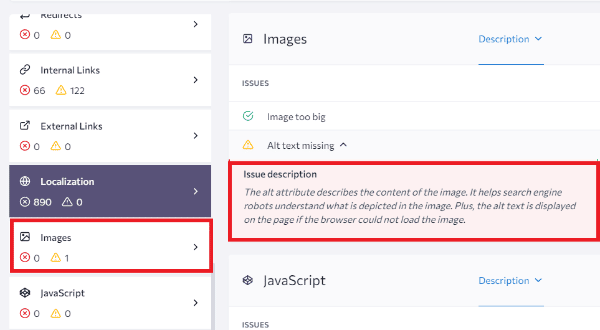
- SE Ranking analyzes your CSS and JS to detect issues like compression rates, cache code, improper file size, and code redundancy. Removing unnecessary sources and coding elements allows your website to work faster and upload smoother, improving the website’s user experience.
#3 Website Accessibility
About 90% of the global Internet population are mobile users. More than 4,28 billion Internet searchers use pocket screens to surf the net in 2021. This explains why the perfect user experience is about improved website accessibility on mobile devices. Mobile-friendliness of sites is an essential aspect of SEO because it allows for better Internet visibility of digital products.
It is important to analyze parameters of AMP (Accelerated Mobile Pages) pages and website adaption for mobile devices. The absence of issues like missed viewport meta tags or improper text to HTML ratio will improve your UX in default. That is why AMP page and mobile optimization characteristics (compatibility of plugins, implementation of AMP pages, etc.) should be checked.
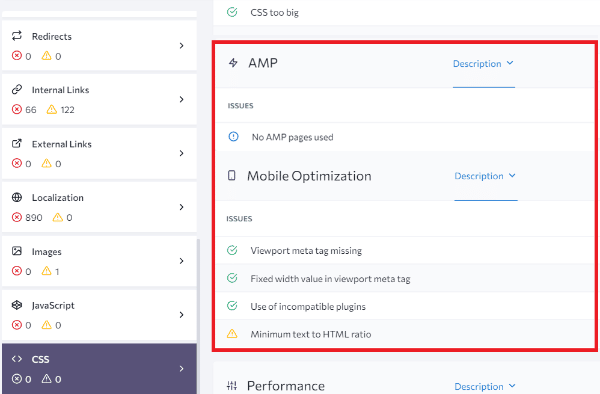
If AMP pages are not used on the website, there is a risk of slower page loading speed and decreased user experience results. Mobile-friendliness also matters when it comes to search engine rankings. When the website is friendly for pocket screens (smartphones, tablets, and other devices), it has better chances to rank higher, provides better UX, and allows you to get more conversions right away.
#4 Website Performance
Website performance is always about the user-friendliness of your site. The three main aspects of the great performance of a website are good website speed, usability, and user experience. Each aspect is measured by different Google-driven metrics (Core Web Vitals). The UX audit includes these parameters and offers some solutions if any issues arise.
Remember that improved website loading time brings more conversions. If the site is slow, be ready for users to leave it before on-page conversion-driven interactions. Fast website loading speed brings a better user experience. The website audit helps solve the following issues:
- Too big HTML size is detected and replaced with a relevant one.
- Page’s behavioral signals can be improved by fixing issues of slow page loading speed.
- Page loading optimization takes place with the help of content compression.
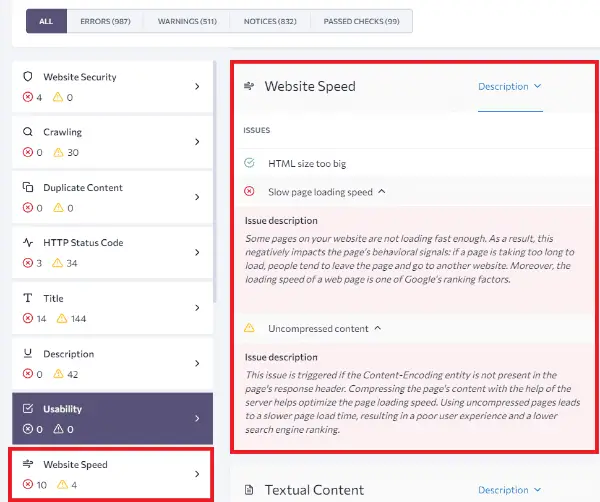
Note that website loading speed is one of Google’s ranking factors. Do not neglect it when it comes to user experience and SEO. The same story is about Core Web Vitals. Due to the Google-driven metrics, UX rates are determined accurately for website performance. The SE Ranking website audit includes LCP, FID, and CLS showings to understand if the Core Web Vitals are good or bad. Here are the required parameters to align with:
- LCP (Largest Contentful Paint) performance level should be within the first 2.5 seconds;
- FID (First Input Delays) is measured of less than 100 milliseconds;
- CLS (Cumulative Layout Shift) comes in less than 0.1.
The better your Core Web Vitals are, the more interactive and attractive a website seems to your visitors. To get the analysis in the infographic format, open the SE Ranking Website Audit Overview and find the Core Web Vitals report. It is worth mentioning that all the parameters are available for both desktop and mobile website versions.
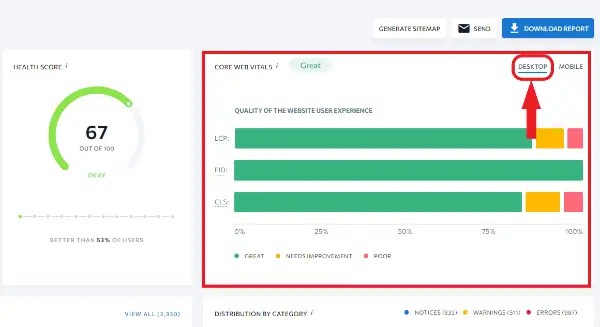
It is also necessary to check parameters such as Flash using, Favicon, and Twitter Cart availability; you can do this in the SE Ranking Usability section. Missing a favicon means that users can face issues with identifying your website properly, and therefore you need to stop using Flash technology on your website.
User experience depends on improved website navigation. To check the quality of the website in the context of how users navigate through your site’s pages, use two main parameters available in the SE Ranking website audit:
1. Page depth – the fewer clicks needed to reach the page of the user’s interest, the better. The diagram Page Depth in the Overview category will show how many pages on your website are easily reachable and how many of them can be hard to find. This way, you will fix some “deep” pages that are difficult to find and improve your website navigation significantly.
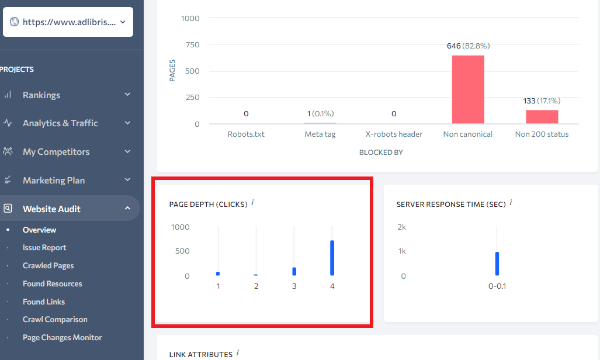
2. Internal linking – use the so-called section in the Issue Report to fix all the problems with internal links. This section will show you if you have pages with no proper linking to them, meaning users would hardly ever reach them. Moreover, you will see if you have issues with the anchor text, which is an important element for helping users navigate on your website.
#6 URL Structure
URLs impact the user-friendliness of your website and its search engine optimization. First of all, easy-to-read web addresses are catchier for humans. They can understand the topic of the shared URL even before clicking it. Easy-to-read URLs are always about higher CTRs, so they are considered UX-driven as well.
UX and SEO-friendly web addresses are not messy and do not include too many dynamic elements. Optimized URLs should contain keywords to help search engines identify content faster. Additionally, the subfolder should be included in the web address. All these parameters are checked during the deep website analysis and check of on-page parameters like URLs.
SE Ranking offers URL structure analysis in the context of web address length and monitoring the number of redirects. With the help of this comprehensive SEO and UX audit, it is possible to set the prioritizing URL for search engines and transform too-long and hard-to-read URLs into SEO-friendly ones. This way, the structure of the customized URL will be well-readable and catchier for website visitors.

#7 Content Clarity
Besides the extraction of information about duplicate content that can harm both SEO and UX performance, it is necessary to consider the section of textual content in the audit report. The essential parts here are relevant Title and H1 tags that are not completely the same, but both clearly show users what your web page and its content are about.
Follow recommendations and do away with the issues of the multiple H1 and identical title and H1 tags. You will improve user experience and get higher chances to rank higher in the search engine.

Compiling Findings into the SE Ranking Website Audit Report
It is worth mentioning again that the website audit results are presented for each category and parameter separately. This way, it is easier to fix issues and undertake the interim check. Select Restart Audit if you have already made any changes to your website. The report will automatically spot which of the issues are fixed and which ones remain.
The dashboard mode of parameter comparison is much more convenient than downloading reports and comparing them out of the software for website auditing. When other SEO tools and programs provide reporting with the opportunity to download and print it, SE Ranking offers a subscription with a built-in dashboard for crawl comparison options for auditing reports. Better visualization of all the differences, changes, and warnings occurs together with faster website audit processing.
Final Word
Today, SEO is not only about the satisfaction of search engine crawlers. A new normal of search engine optimization is analyzing websites with internet users in mind. That is why SEO and UX go hand in hand nowadays. To do away with various challenges concerning search engine optimization and user-friendliness, it is recommended to undertake a website audit regularly.
For this purpose, you can use reliable software with a range of online tools for monitoring, checking, rechecking, and updating different parameters (such as usability scores, Core Web Vitals, website speed, external and internal linking, etc.). With the help of comprehensive research and timely changes, it will be possible to get higher SERPs and improve UX.
Now, SEO specialists and UX designers advance the same goal – present a high-grade mobile-friendly website with an intuitive interface, high-level content, and easy navigation. If the site is clear and attractive to users, they will not leave it. At the same time, search engines will appreciate this website and rank it higher.
